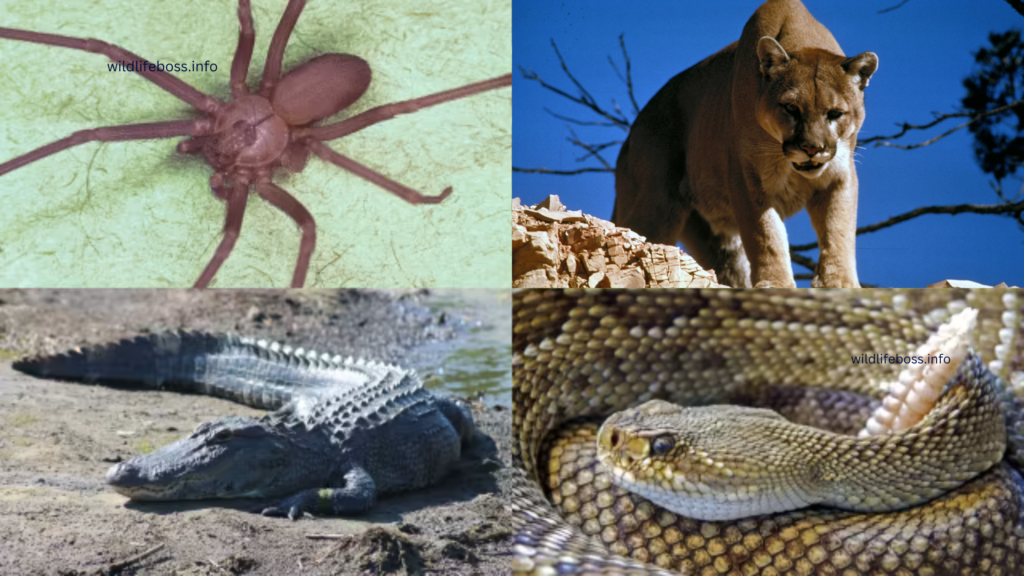Travelers from within and outside of Texas enjoy visiting and utilizing everything that the state has to offer.
Texas has a wide collection of wildlife, including sharks, cougars, and deadly bacteria, much like its diversified population.
Because Texas welcomes millions of tourists each year, it’s crucial for people to be aware of the risks that particular animals may pose.
These are eight most dangerous animals in Texas that risky .
1. Brain-Eating Amoebae

Scientific Name: Naegleria fowleri
Classification: Heterolobosea
Habitat: Lakes, rivers, hot springs, warm soil
Diet: Carnivores
Eating brains Microscopic, single-celled creatures known as amoebae can cause catastrophic frequently fatal brain infections. These species choose warm, moist environments like rivers and lakes that have an abundance of soil.
The Texas Department of State Health Services documented 28 cases of brain-eating amoeba-related deaths between 1983 and 2012.
In 2020, it was discovered that a number of animals in Texas localities, including Rosenberg, Angleton, Lake Jackson, Brazoria, Freeport, Richwood, Clute, and Oyster Creek, have brain-eating amoebae in their water supplies.
The victim’s nose allows the lethal bacteria to enter the body through tainted water. The result is a disease called primary amoebic meningoencephalitis (PAM).
Despite the extreme rarity of PAM instances, the death rate is estimated to be very near to 100%.
Two to fifteen days following the initial exposure to brain-eating amoebae, symptoms of primary amoebic meningoencephalitis may appear.
The symptoms, which are nearly invariably very severe, include fevers, shaking, headaches, mental confusion, nausea and vomiting, meningitis-like symptoms, and even comas.
Even though there is treatment for brain-eating amoebae, survival rates are low.
Sea also: 7 Most Dangerous Animals In Bali(With Photos)
2. Cougars

Scientific Name: Puma concolor
Classification: Mammalia
Habitat: Rocky canyons, mountain ranges
Diet: Carnivores
Although they have been seen in every county animals in Texas, cougars, sometimes known as mountain lions or pumas, are most common in southern Texas, some parts of Hill Country, and the Trans-Pecos.
Human fatalities still happen, although cattle is far more vulnerable to cougar attacks than humans are. There have been twenty-five verified deaths in the US and Canada since 1980.
Thankfully, cougars are not typically perceived as hostile animals; rather, it is believed that they are afraid of people and do not intentionally hunt them down.
But cougars are becoming more dangerous to people as they continue to lose a lot of their habitat to mass development. If a cougar attacks a person, it’s probably because it thought the person was livestock or other prey.
These big cats’ strength and size allow them to seriously hurt or injure people. Cougars can reach lengths of nine feet and weigh about 150 pounds! This large of an animal can seriously hurt you if it jumps on you.
With their razor-sharp claws, cougars may seriously cut through human flesh and cause blood loss. Wounds (typically puncture wounds) might subsequently get infected if medical personnel do not provide appropriate treatment.
During an attack, severe blood loss may result in fatalities.
3. Alligators
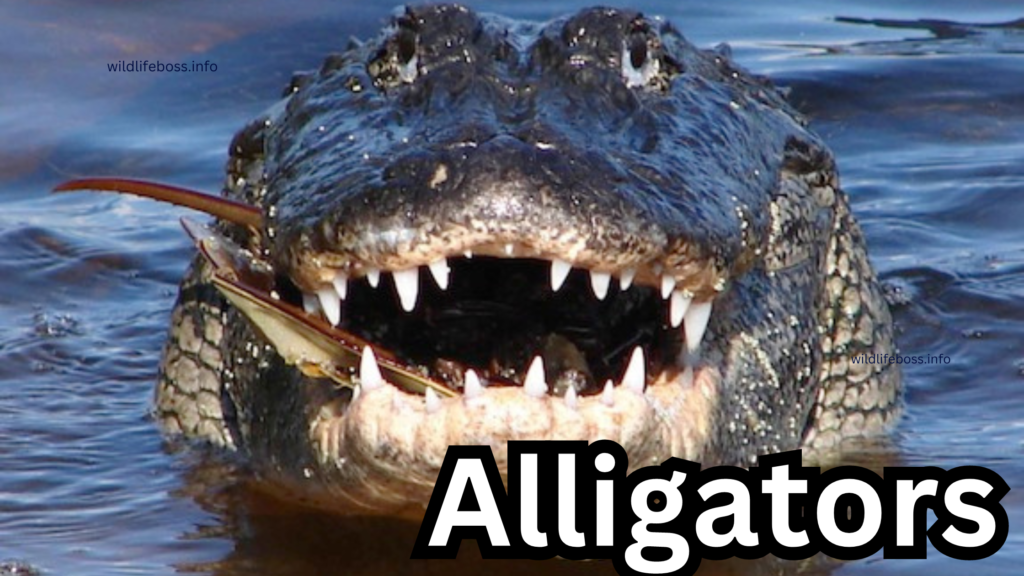
Scientific Name: Alligator mississippiensis
Classification: Reptilia
Habitat: Rivers, lakes, swamps, marshes
Diet: Carnivores
In some parts of Texas, such the eastern third that contains the cities of Tyler, Longview, Marshall, and Henderson, alligators are common. These intimidating reptiles usually live in rivers, marshes, and swamps.
Despite having a carnivorous appetite, alligators rarely eat humans. There is only one known alligator attack animals in Texas.
An alligator is more likely to attack a person if their habitat is disturbed (a human enters their water), it’s breeding season, or the alligator believes the human is regular prey. Alligators are generally wary of humans despite this.
Alligators, meanwhile, may deftly disfigure a person in a matter of minutes. With a maximum length of fourteen feet, alligators can swiftly cover ground and arrive at their prey due to their combination of length and speed.
An alligator assault can result in bites, scratches, punctures, and lacerations as the main types of injuries. They usually attack the hands, arms, legs, and feet, among other organs.
Owing of their incredibly sharp set of eighty teeth, these wounds frequently cause significant blood loss or even limb loss.
Alligators can also kill their prey by drowning it; they can grab hold of their meal and submerge it while they eat.
4. Scorpions
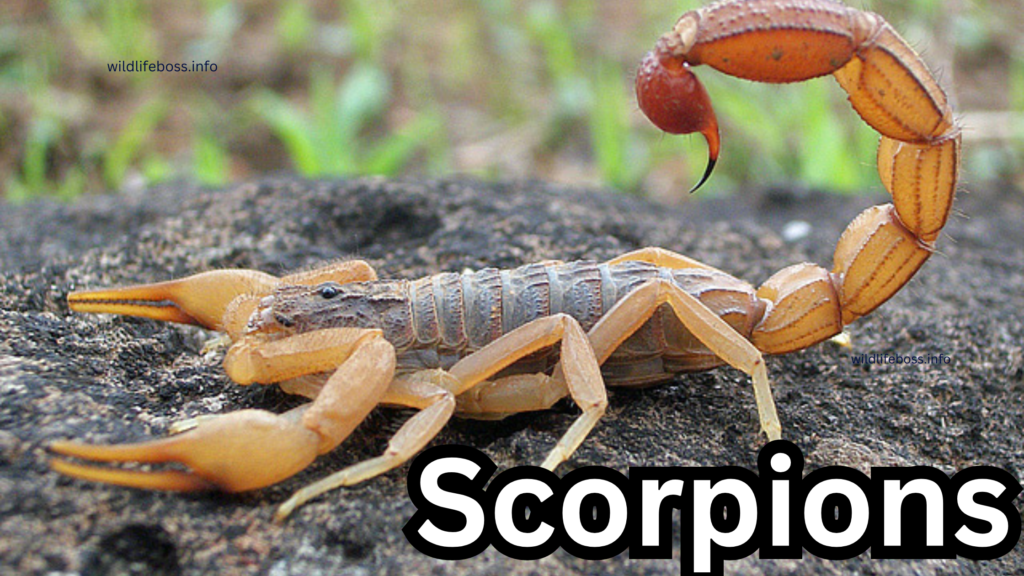
Scientific Name: Scorpiones
Classification: Arachnida
Habitat: Deserts, grasslands, rainforests
Diet: Carnivores
Animals in Texas, the most common type of scorpion encountered is the Striped Bark scorpion.
The Lesser Stripetail, Texas Cave, Trans-Pecos Smooth Claw, and Straight-Faced Solifugid are some of the other frequent species of scorpions found in Texas.
Although they can be found all around the state, scorpions are most commonly discovered in homes and behind logs.
Humans may be in risk from scorpions if they feel threatened. A scorpion is more likely to avoid humans if they are not in any way irritated. Approximately one million people get stung by scorpions each year.
The venom that a scorpion stings humans with is neurotoxic. Localized discomfort, redness, and swelling are among the mild signs of a scorpion sting. Furthermore, following a sting, tremors and perspiration may start.
Fever, nausea, vomiting, joint pain, raised heart rate, and breathing difficulties are some of the more mild signs and symptoms of a scorpion bite.
Serious symptoms can include comas, mental disorientation, arrhythmia, and even organ failure, however these are extremely rare.
It is extremely uncommon for a scorpion sting to cause death. In more than fifty years, there hasn’t been a documented death in the US!
But younger kids are particularly vulnerable to experiencing worsening symptoms after being stung by a scorpion.
5. Timber Rattlesnakes
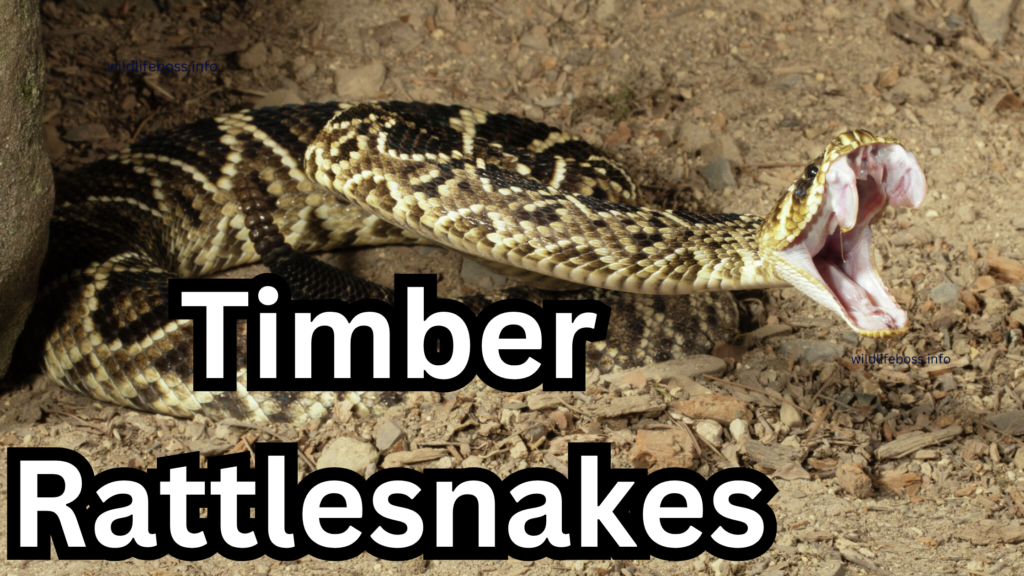
Scientific Name: Crotalus horridus
Classification: Reptile
Habitat: Swamps, forests, mountainous forests, fields
Diet: Carnivores
The second most important venomous snakes animals in Texas is the timber rattlesnake, sometimes referred to as the canebrake rattlesnake.
They are mostly found in Tyler and Henderson, as well as the Eastern Third region of Texas. It is a pleasure for timber rattlesnakes to live in woods and woodlands.
Even though they rarely bite people, timber rattlesnakes can be devastating if they do strike. Luckily, the snakes will rather slither away to protect themselves from harm. Usually, they will bite as a “Plan B.”
These rattlesnakes can spread disease because their long fangs pierce human flesh. They are extremely dangerous. Both tissue and blood cells can be destroyed by their deadly venom. In more serious situations, internal bleeding may result from this.
Symptoms of a Timber rattlesnake bite, like pain, redness, and swelling, are more frequently seen. A bite can also cause diarrhoea, perspiration, muscle spasms, nausea, and vomiting.
In severe situations, a Timber rattlesnake bite may cause respiratory problems and visual impairments. A Timber rattlesnake bite may result in fatalities if immediate medical assistance is not obtained.
6. Fire Ants
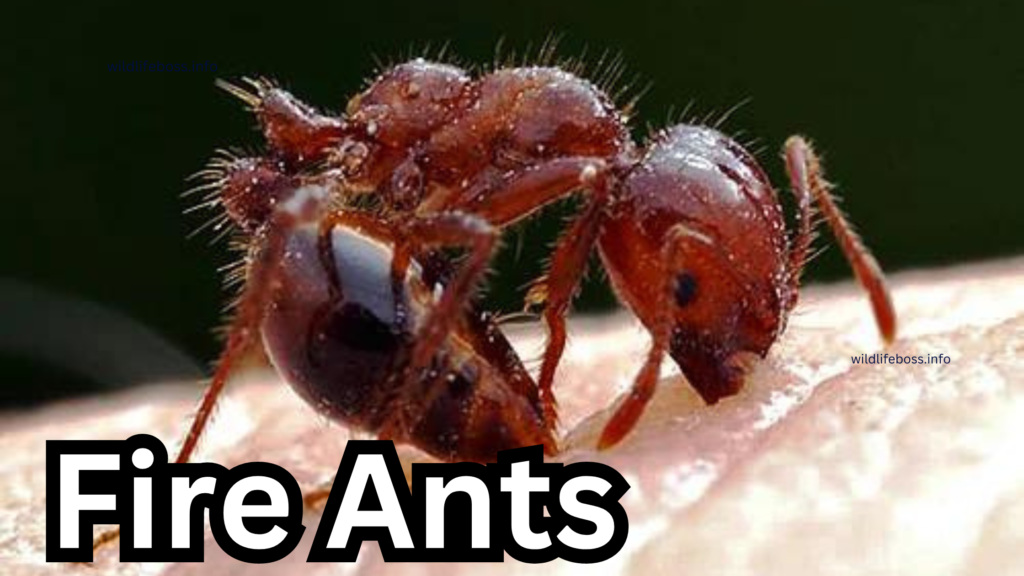
Scientific Name: Solenopsis
Classification: Insects
Habitat: Most areas with soil
Diet: Carnivores
Animals in Texas has a large population of fire ants all around the state, especially in the warm, humid regions. They may still be found in Texas’s drier regions, though.
These bothersome ants have the potential to cause enormous harm; each year, they cause damages worth $1 billion to the state. Solanopsin is the venom that fire ants emit when they sting people.
Fire ants sting, not bite, despite the fact that many people refer to their encounters as “bite” experiences! The fire ant uses its powerful jaws to grip its target firmly when it comes into contact with them.
Fire ants use their stinger to inject their victim with venom once they acquire a firm grasp on their skin.
It is rarely cause for alarm to receive just one fire ant sting. The true tragedy occurs when they attack in big groups. The victim of a fire ant attack in a large gathering may receive hundreds of stings!
Common signs of a fire ant sting include localized pain, redness, swelling, and itching (from blisters that form on the skin). These painful blisters often fill with pus and take longer than a week to heal.
Breathing difficulties, diarrhea, and nausea and vomiting are more serious symptoms. The most common cause of death from fire ant stings is anaphylaxis, an allergic reaction to the venom.
7. Bull Sharks

Scientific Name: Carcharhinus leucas
Classification: Chondrichthyes
Habitat: Coastal waters
Diet: Carnivores
It’s rare to think about sharks when one thinks of the animals in Texas. The state’s coastal waters are home to large concentrations of bull sharks.
Bull sharks are unique in that they can live in both fresh and saltwater. They commonly encounter people in the water because of their flexibility.
Given their reputation for aggression, bull sharks pose a serious risk to any humans who might be in their waters. These sharks are actually among the most prone to attack people.
There have been 119 confirmed bull shark attacks according to the International Shark Attack File, 26 of which have resulted in fatalities.
Due to their rapid swimming, these hostile sharks might quickly come into contact with an unlucky human. Their triangular-shaped teeth are razor sharp and can easily rip through human skin.
In addition to severe blood loss, fractured bones, and organ punctures, bites from bull sharks can result in fatalities or limb loss. Hemorrhagic shock can also occur in some instances.
Shark bites are typically punctures, so it’s important to treat them carefully to reduce the risk of infection. Prolonged swelling, pus, and increased agony are indicators of an infected shark bite.
8. Brown Recluse Spiders
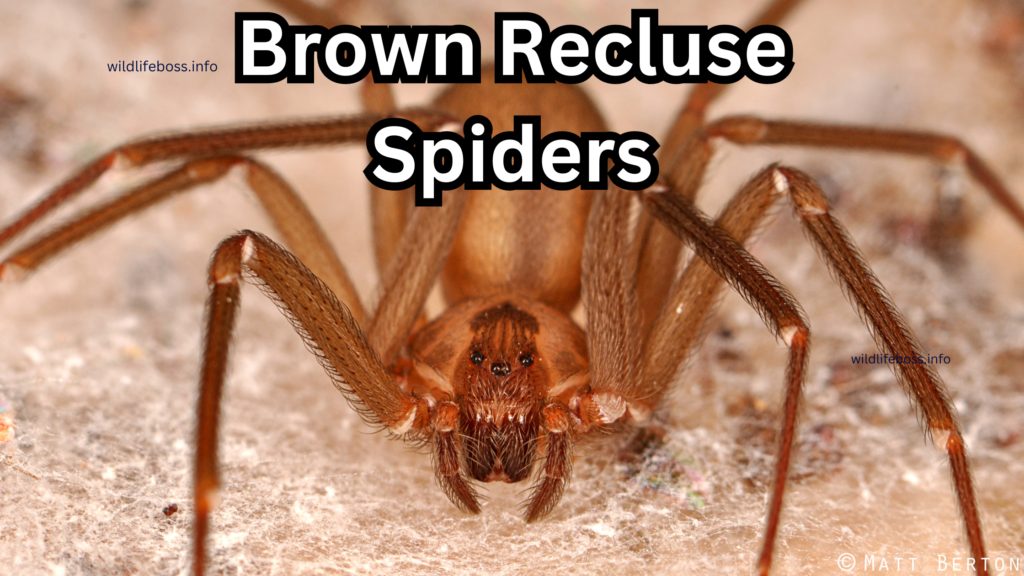
Scientific Name: Loxosceles reclusa
Classification: Arachnida
Habitat: Warm, dry areas
Diet: Carnivores (also cannibalistic)
There are numerous spiders animals in Texas, the brown recluse being only one of them. These poisonous spiders like to live in peaceful places, under logs and rocks.
Brown recluse spiders can also be found in homes, particularly in dark corners and beneath of clothes. The prevailing consensus is that brown recluse spiders are not aggressive, yet they have been known to bite when provoked or threatened.
These spiders’ venom is poisonous to people. But when they bite, brown recluse spiders usually only inject a small amount of venom. When this venom is spread, it can result in tissue death and damage to blood vessels.
Because their bites usually don’t hurt right away, brown recluse spiders pose a particular threat to people. Being proactive in treating a bite can be difficult as a result.
Redness, itching, and blistering are localized symptoms that often appear three hours after a bite.
Acute brown recluse spider harm symptoms might be fevers, rashes, chills, aches in the muscles, nausea, and dizziness. The majority of brown recluse spider bite symptoms go away in three weeks.
conclusion:
Despite its allure, Texas’s wildlife can be dangerous to both tourists and state residents. A timber rattlesnake, alligator, or cougar may occasionally be spotted by residents of the state’s eastern third.
Animals in Texas, scorpions, fire ants, and brown recluse spiders are the most frequently sighted animals. There is an animal to watch out for wherever you are in Texas!

